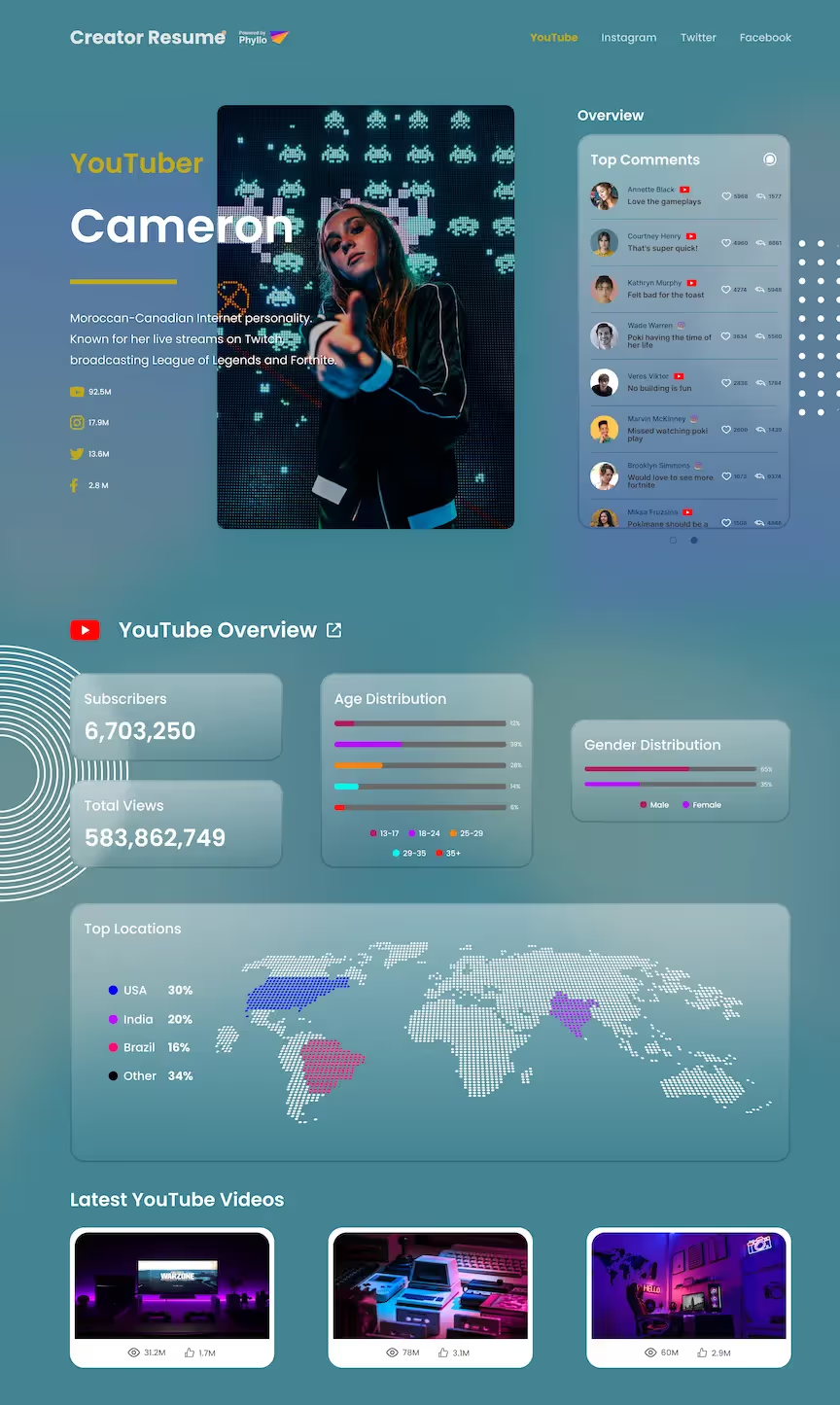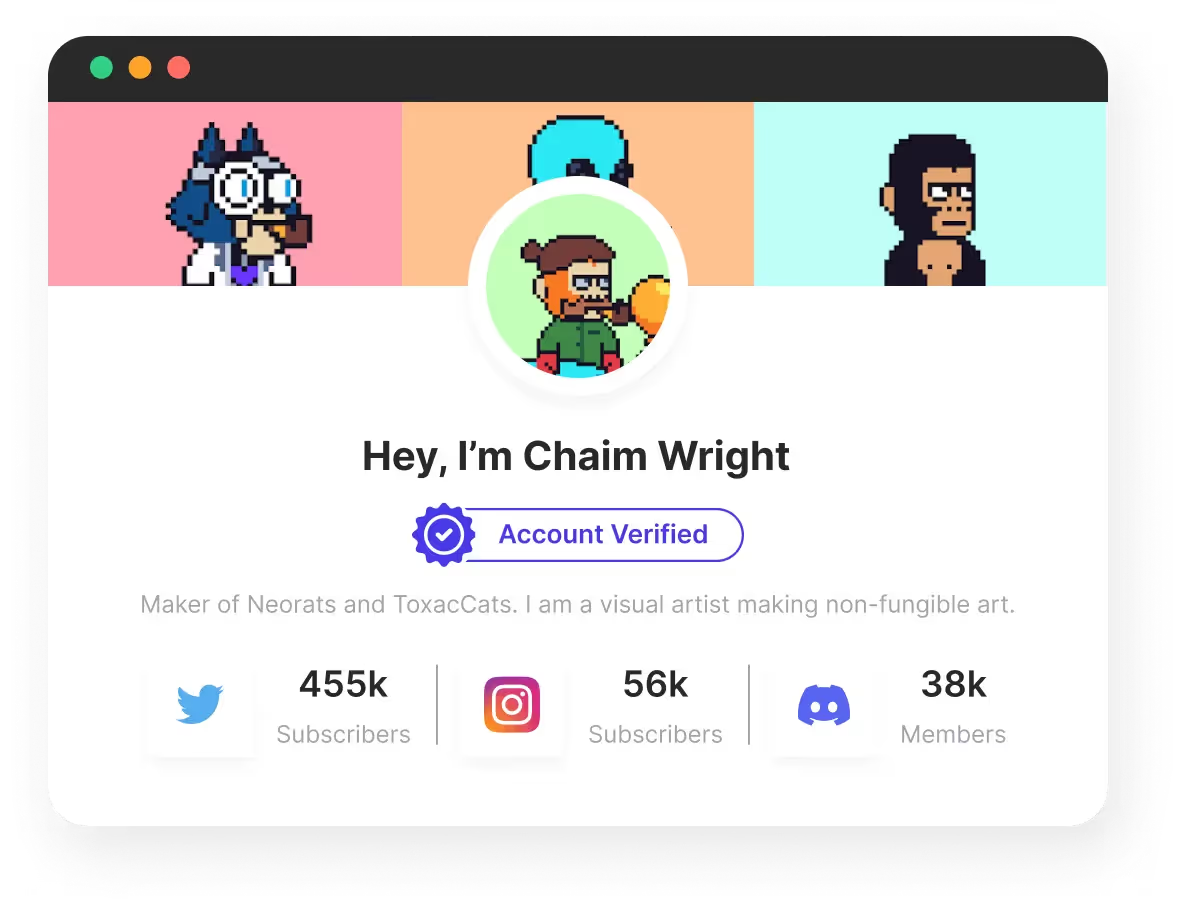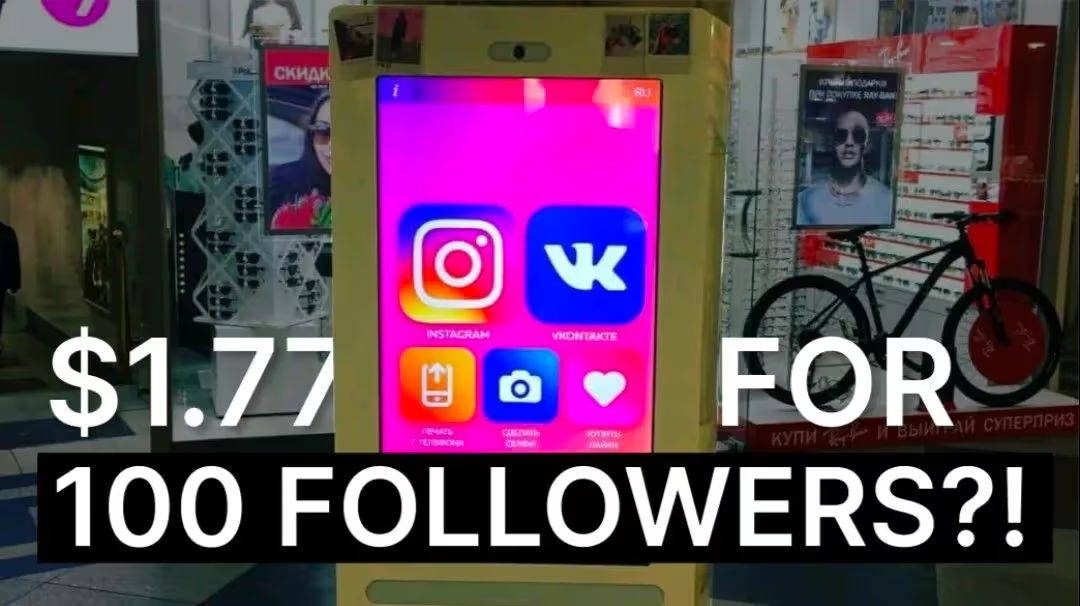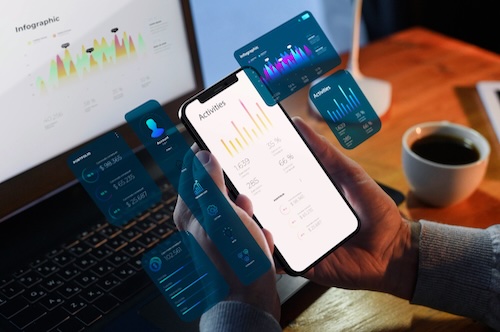Influencers and creators have become ubiquitous, and what was once an off-beat marketing channel has now gained mainstream importance. According to Statista, the global influencer marketing market size was valued at USD 16.4 billion, which has doubled since 2019. The creator economy is stated to grow at 35.12% between 2022-2028 and reach a market value of USD 109.37 billion.
Influencer marketing has grown in popularity because customers are becoming skeptical of brands indulging in self-promotion and want something more to convince them to buy a product or service. It gave rise to influencer marketing.
Today, almost every brand uses an influencer to advocate their products and services.
What are influencer analytics tools?

When 20 fashion influencers on social media wore dresses from a particular brand, their followers took an interest in the brand. These social influencers have millions of followers on their social handles who keep a keen eye on what they do, wear, eat, and everything.
But just like every marketing channel, executives need to track the analytics and the ROI.
Influencer analytics tools clearly show an influencer's reach and performance and their impact on the brand's performance, how often their followers engage with them, and how and whether these followers are organic or bots. The marketer needs a lot of understanding before implementing a strategy to market the brand and acquire new customers.
Importance of influencer analytics tools
As per a survey by HubSpot, 72% of GenZ are heavily influenced by content creators. Influencer product recommendations are trusted by 50% of Millennials. This reduces to 38% when celebrities suggest products.
There are several social channels where influencers are "influencing" their audience. Today, target audiences and niche-specific influencers cohabit on platforms like Facebook, YouTube, Instagram, TikTok, Snapchat, Twitter, Reddit, and others.
Did you know that almost 40% of marketers planned to spend 10 to 20% of their marketing budget on influencer marketing? How marketers can divide their marketing dollars is a strategic decision, and this is where influencer analytics tools come into play.
Read more: The Evolution of Influencer Marketing
Here is how influencer analytics tools can help:
1. Target the right audience

You are a luxury fashion brand; would you prefer a health influencer to market your brand? No! They have followers interested in health and not in your fashion accessories.
Influencer analytics tools help marketers analyze an influencer's audience and identify if they can spread your brand message to the right audience.
Every business must know its target audience, including age group, gender, location, and preferences.
2. Choose the right influencer

You cannot ask a tech influencer to be a brand advocate for a gym wear brand. However, a fitness, healthcare, or yoga influencer can help you market the product to the right audience.
You need to use influencer analytics tools to find the right influencer for your brand.
Sara Dietschy is a tech influencer who is a good fit for Samsung but not Gucci. The right influencer will help market your product to the right target audience.
In the present market, the number of influencers is growing exponentially. Choosing the right influencer becomes critical for your success. You need to find someone who can drive traffic while fitting your budget and market segment.
For example, Nike has for the last few years partnered with influencers to create inclusive content that has helped increase its brand value and recognition. Their target audience can more easily relate to the products.

3. Measure campaign performance

Just putting out content with the help of an influencer is not enough. Marketers need to closely monitor each campaign to get the most out of every dollar spent.
Use influencer analytics tools to know how your content performs on each social media platform. The analytics uses performance metrics, like engagement rates, shares, campaign reach, impressions, etc., to give you insight into your content performance. It will further help you create better strategies.

4.Understand your niche and moment marketing
Several influencer analytics tools give you insights into what's trending in the market as per your niche. These details help you outline strategies that align with your company goals.
Social media marketing relies heavily on moment marketing, and if you cannot jump on that bandwagon, you can lose market share to your competitors!
Game of Thrones is one of the biggest shows in recent history and brands encashed on its popularity.

5.Understand where your strategy went wrong
Influencer analytics gives insights into the loopholes of your marketing strategy. Your brand message may not reach the right audience, you are not getting the desired result, or your marketing strategy is not boosting your sales.
Analyzing the loopholes allows marketers to restructure their marketing strategy.
Important KPIs to understand influencer analytics
Now that we have understood the importance of influencer analytics let us know the different approaches to measure it.
1. Brand awareness
If your target is to increase brand awareness, you must measure your campaign reach, engagement, and impression of the target audience.
Keep track of any brand mentions, and look into their nature and comments. Any negative comment can demotivate your audience, and you must immediately take measures to resolve the issue. Important KPIs to measure are:
Followers
Keep an eye on your followers to ensure they originated from the influencer marketing campaign, not other sources. Compare their numbers before and after launching the campaign.
Impressions
Impressions are the number of times a marketing post was viewed in timelines on social media platforms. It helps brands gauge their visibility to the target audience and calculate brand awareness.
Hashtags
Every branded hashtag contains the brand name and a slogan or tagline for marketing campaigns. Keeping track of your campaign or branded hashtags allows you to check the campaign's performance. Plus, brands can collect user-generated content from these curated hashtags.
2. Tracking conversion
For product-selling companies, conversion metrics can help calculate how many potential customers convert into paying customers. However, for service providers, conversion can be trial sign-ups, subscriptions, etc.
Brands must use different conversion metrics to generate accurate conversion and campaign performance measurements.
Use trackable links
One can use trackable links to calculate campaign conversions, where each link has a unique URL. These can be read through standard influencer analytics tools. You can share these links via blog posts or email to drive conversions and check the origination of each conversion.
Track conversion with affiliate links
Brands offer exclusive deals through affiliate links that can generate leads and commissions. Each link helps create a compelling call to action for consumers and provides trackable links to measure conversion rates.
3. Measure your content performance
With the help of influencer analytics tools, you can track your content performance and refine your campaign strategy. The analysis illustrates the style and type of content you produce and the response from your audience.
Track total engagement
Brands need to keep an eye on the audience engagement that content delivers. It includes likes, comments, shares, and clicks. Likes demonstrate serious audience engagement, while comments allow brands to understand their audience's opinion.
Shares ensure your content is good, growing organically, and reaching more audiences. Clicks and tags help you understand how often your audience clicks on the link.
Understand engagement rate
The engagement rate is the total post engagements divided by the number of views. Content with a higher engagement rate is more effective in resonating with the audience and has better visibility among your target group.
4. Track your web traffic
Driving traffic to the website is the essential step for brands that allows generating new paying consumers. Calculate your web traffic to measure the effectiveness of influencer marketing campaigns revealing actual audience size and potential customers looking for your product or service.
Is your influencer program generating profits?
Influencer program profit = influencer program sales - Influencer program costs
Influencer program ROI = Influencer program profit/ Influencer program costs
The costs associated with influencer programs are product seeding costs, product discounts, cost of goods sold, shipping charges, and influencer compensation.
Learn more about different metrics to measure influencer marketing effectiveness in this article: Data Is Good, But Insights Are Better For Effective Influencer Marketing
Challenges in Influence Analytics
With the advent of influencer marketing, brands see their advertising dollars showing better returns. However, it gave rise to a few challenges over the past few years.
Risk of fraud influencer

According to an article from the New York Times, roughly 15% of Twitter profiles are fake but are designed to look real. Often this is used to show that a certain media personality has immense reach among their peers.
Certain analytics tools can miss this, but the algorithm of platforms like Instagram severely penalize brands for using bot or fake followers.

Moscow is full of vending machines selling fake likes and followers for as low as $1
Tracking followers, not influence
Are you using tools to track the number of followers? They don't measure influence!
People following influencers may not have equal influence on purchasing decisions. Spotting the difference is challenging; often, we consider an account with huge followers to be influential, but it may not be!
Difficulty in tracking data
Analytics collects different influencer data, which is sufficient for the overall outlook of the strategy, but at times it gets tough to identify what the particular audience is doing. Use a good analytics tool that helps you determine how your campaign is working and the target audience's reaction.
Measuring ROI
The main goal of influencer marketing is brand awareness which is hard to measure. Plus, some technical limitations may impact the campaign measurements. These make measuring ROI difficult unless you have good influencer analytics tools to automate these measurements and track the campaign's actual performance.
To learn more about the challenges of Influencer marketing platforms, read our exclusive blog: 10 Key Challenges For Influencer Marketing Platforms Going Forward
Popular influencer analytics tools
Several influencer analytics tools are used to measure the effectiveness of the influencer campaign.
insightIQ
insightIQ equips Influencer marketing managers with powerful insights, enabling them to discover ideal influencers, deeply analyze audience and engagement metrics, and evaluate campaign success using robust data. Unlike standard IM tools with limited influencer options, this platform offers a comprehensive influencer database.
Modash
Modash helps brands and marketers to find and analyze different influencer profiles. It gives you a detailed audience and performance analysis for over 200 million influencer profiles on YouTube, Instagram, and TikTok.
Upfluence
This influencer analytics tool offers you a unique search feature and discovery engine with agency support. You get a database of 3 million influencer profiles on Instagram, YouTube, Twitch, Twitter, Pinterest, TikTok, and Blogs.
BuzzSumo
It is a great analytics tool that gives an insight into what's trending on social media and allows you to search for the most shared content on Twitter, Instagram, and YouTube. You can search, analyze and follow influences and sort their domain authority, number of followers, and more.
NinjaOutreach
It gives brands access to a database of more than 100 million influencers on Instagram, YouTube, TikTok, and Twitter. This platform uses machine learning technology to improve the data search policy. NinjaOutreach allows you to search influencers by niche and location, budget, engagement rates, likes and replies for posts, etc.
How is Phyllo helping influencer analytics?

Phyllo is an API Gateway to access creator and independent work platforms like YouTube, Instagram, Twitch, TikTok, and more.
We offer:
- Connect: It is the core SDK product that enables creators to connect to different work platform accounts with Phyllo.
- Identity: This Phyllo product is used to access the creators' profile information.
- Audience: It is a sub-product of Phyllo under an identity that gets access to creators' audience demographics information.
- Engagement: This product gives you access to the creator's content information, including actual content, URL, number of likes, comments, shares, etc.
- Income: It gives access to creators' income information.
- Publish: This Phyllo product allows you to publish content on an influencer account, including images, videos, texts, and a combination.

Conclusion
No marketing strategy can go unmeasured! You need to use proper influencer analytics tools to get the real image of an influencer, their follower's engagement, etc. It helps you track influencer ROI, vet and compare between different influencers, increase transparency and boost performance, and improve your brand awareness.
FAQs
Which KPIs measure brand awareness?
Some of the best influencer analytics KPIs to measure brand awareness are:
● Number of followers of an influencer
● Number of the brand's social media followers
● Number of impressions
● Number of video views
● Total reach
● Web traffic
● Google search volume
What are the best KPIs to measure conversion?
Some of the best GPS to measure conversions are the number of sales, subscriptions, or downloads, average order value, and click-through rate.

.avif)







